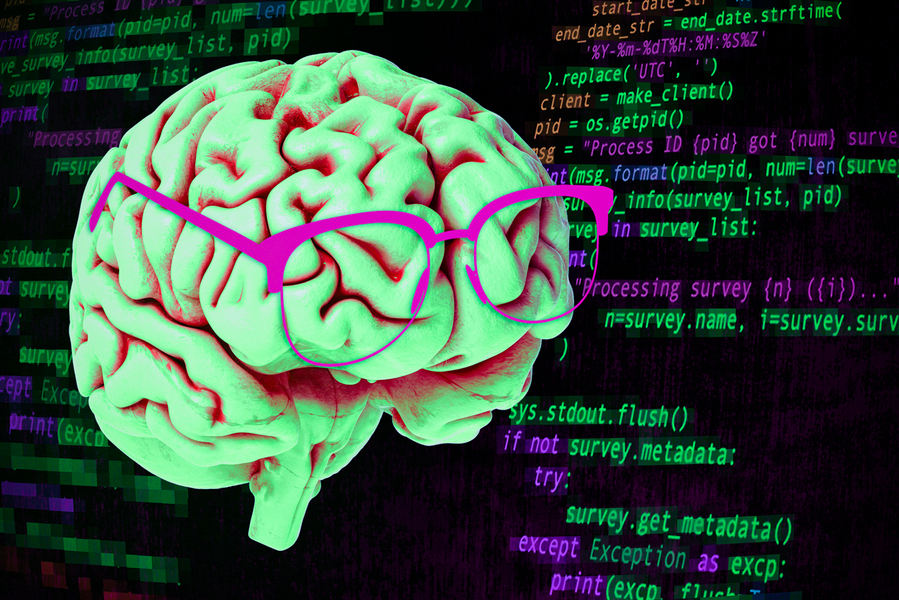Original sourse by
Anne Trafton | MIT News Office
In some ways, learning to program a computer is similar to learning a new language.

In spite of those similarities, MIT neuroscientists have found that reading computer code does not activate the regions of the brain that are involved in language processing. Instead, it activates a distributed network called the multiple demand network, which is also recruited for complex cognitive tasks such as solving math problems or crossword puzzles.
“Understanding computer code seems to be its own thing. It’s not the same as language, and it’s not the same as math and logic,” says Anna Ivanova, an MIT graduate student and the lead author of the study.
There are two schools of thought regarding how the brain learns to code, she says. One holds that in order to be good at programming, you must be good at math. The other suggests that because of the parallels between coding and language, language skills might be more relevant. To shed light on this issue, the researchers set out to study whether brain activity patterns while reading computer code would overlap with language-related brain activity.
The two programming languages that the researchers focused on in this study are known for their readability — Python and ScratchJr, a visual programming language designed for children age 5 and older. The subjects in the study were all young adults proficient in the language they were being tested on. While the programmers lay in a functional magnetic resonance (fMRI) scanner, the researchers showed them snippets of code and asked them to predict what action the code would produce.
The researchers saw little to no response to code in the language regions of the brain. Instead, they found that the coding task mainly activated the so-called multiple demand network. This network, whose activity is spread throughout the frontal and parietal lobes of the brain, is typically recruited for tasks that require holding many pieces of information in mind at once, and is responsible for our ability to perform a wide variety of mental tasks.
Previous studies have shown that math and logic problems seem to rely mainly on the multiple demand regions in the left hemisphere, while tasks that involve spatial navigation activate the right hemisphere more than the left. Working with Marina Bers, a professor of child study and human development at Tufts University, the MIT team found that reading computer code appears to activate both the left and right sides of the multiple demand network, and ScratchJr activated the right side slightly more than the left.
…a team of researchers from Johns Hopkins University also reported that solving code problems activates the multiple demand network rather than the language regions.
The findings suggest there isn’t a definitive answer to whether coding should be taught as a math-based skill or a language-based skill. In part, that’s because learning to program may draw on both language and multiple demand systems, even if — once learned — programming doesn’t rely on the language regions, the researchers say.